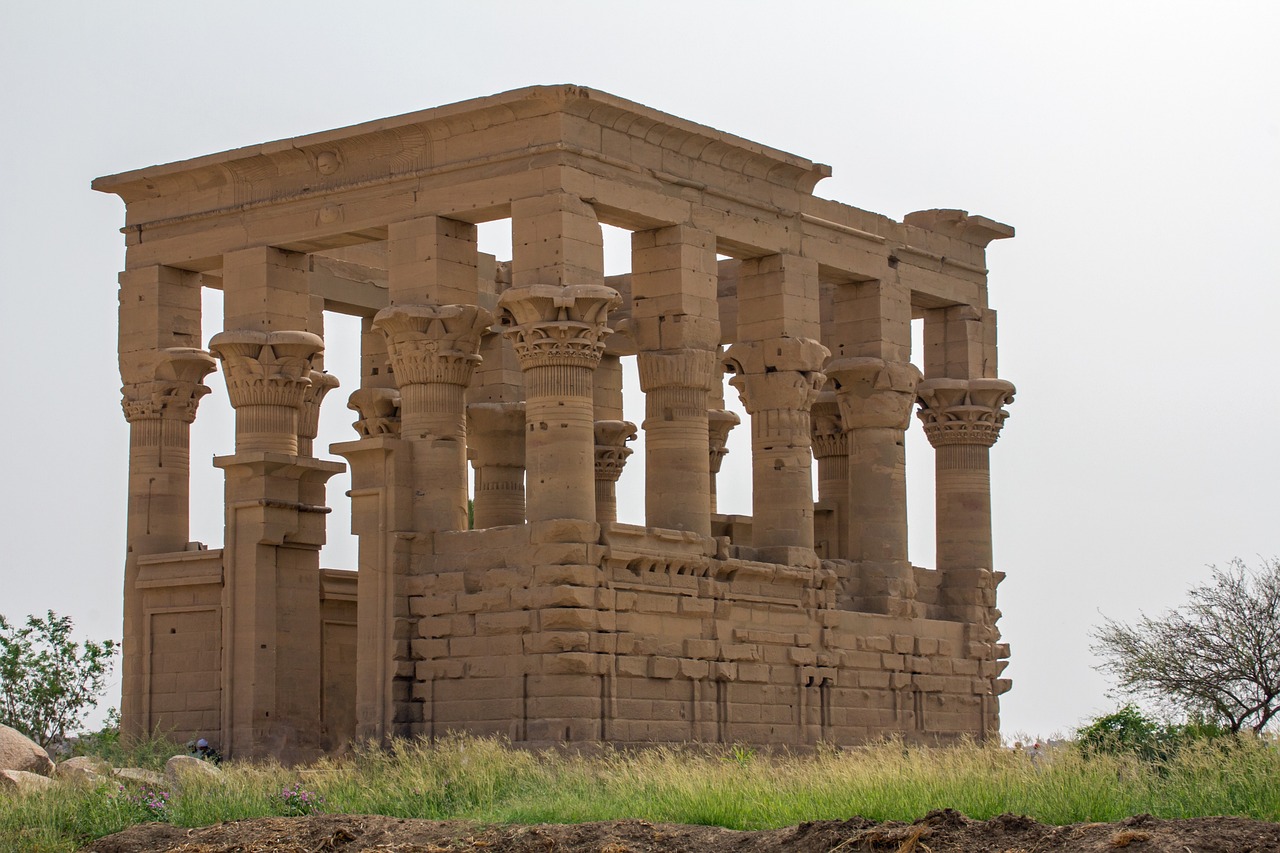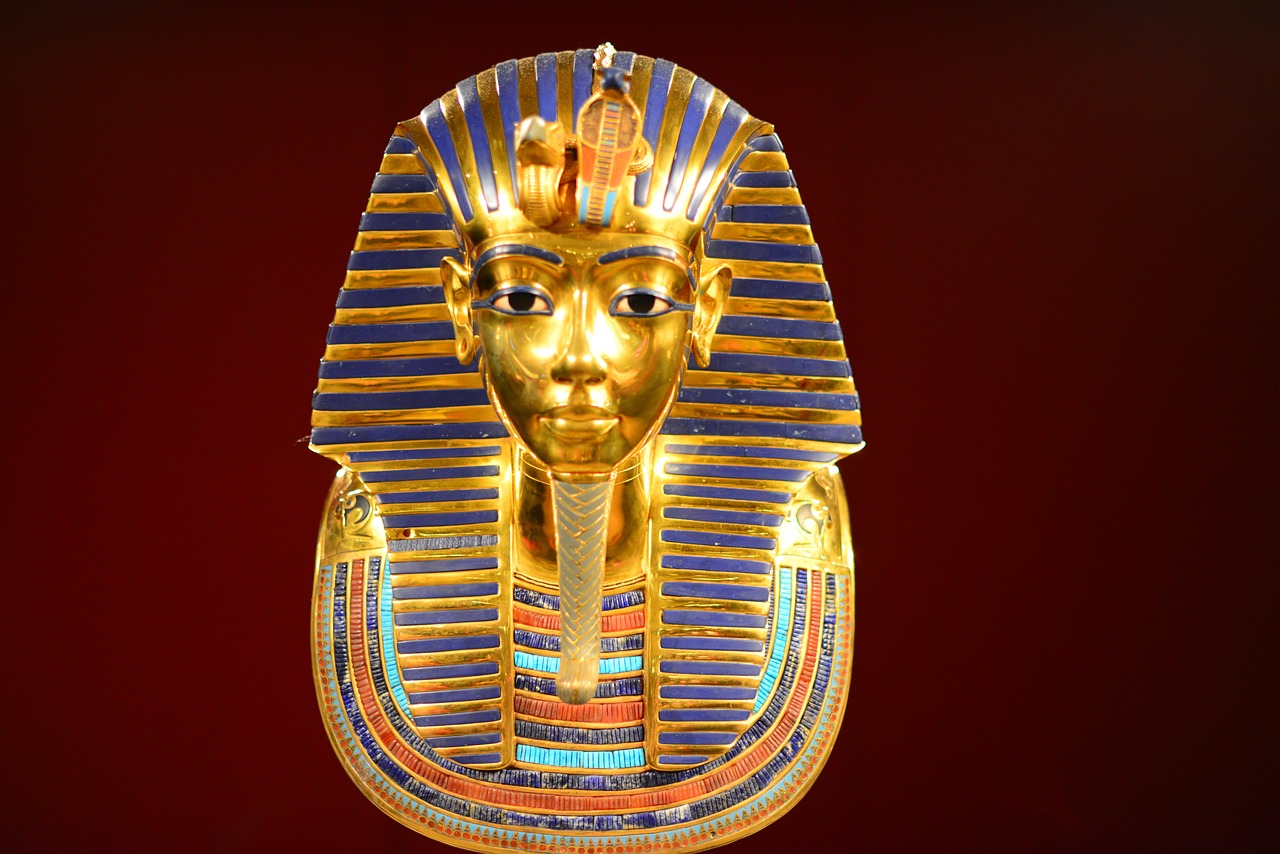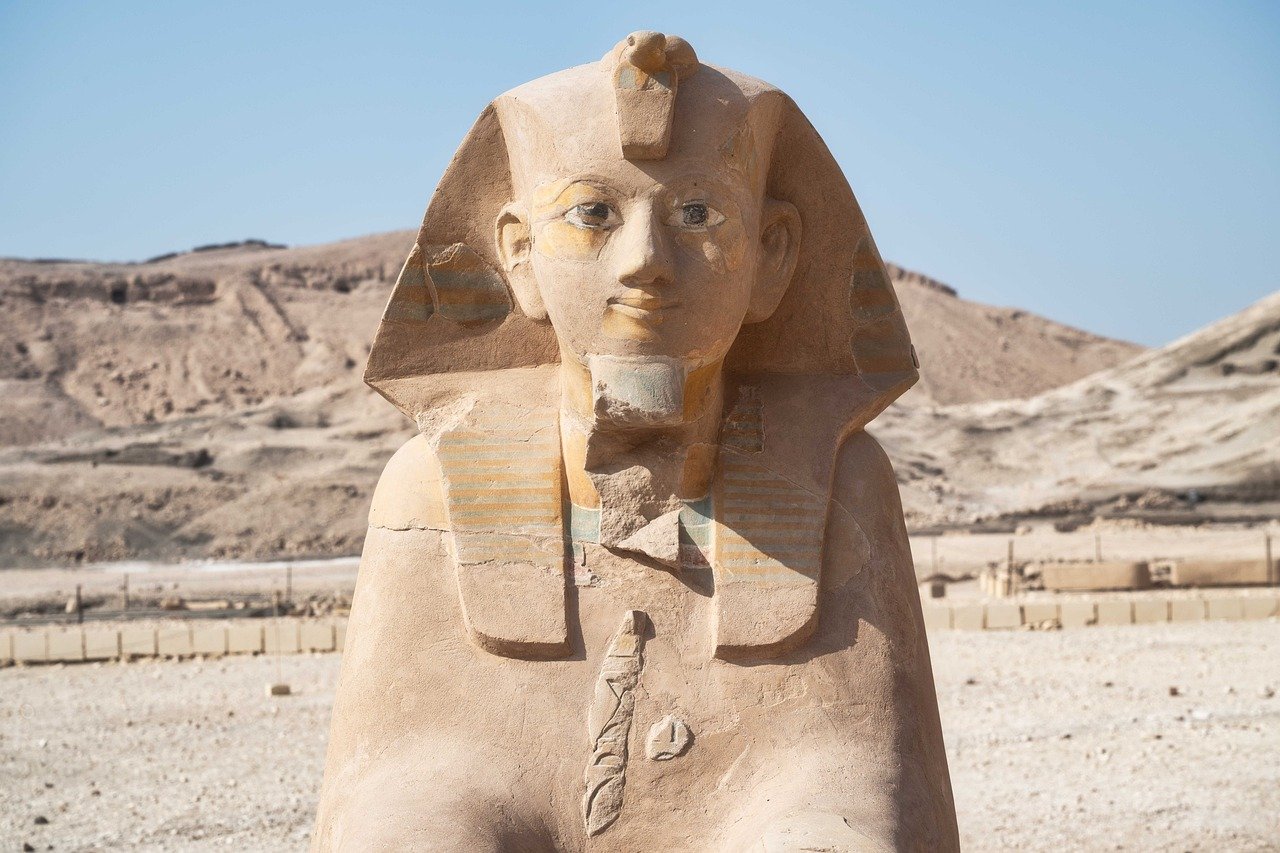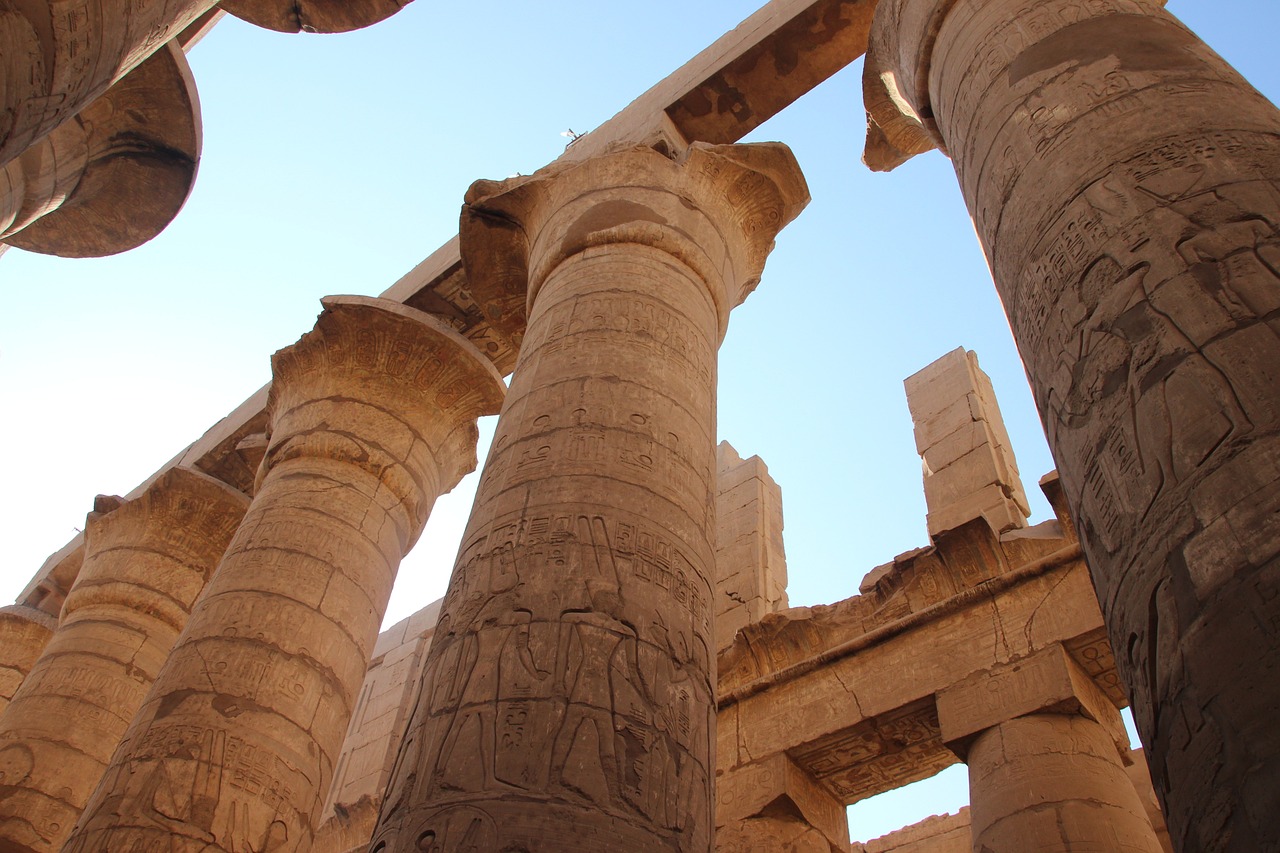The Secrets of Ancient Egyptian Writing and Record Keeping
Delve into the mysterious world of ancient Egyptian writing and record-keeping, where hieroglyphs and papyri hold the secrets of a civilization shrouded in intrigue and wonder. Imagine the dusty chambers of scribes meticulously inscribing symbols on scrolls, capturing the essence of life in a time long past. The evolution of Egyptian writing is a journey from simple pictograms to a sophisticated system of communication, reflecting the profound importance of written language in the daily lives of the ancient Egyptians.
Tools such as reed brushes dipped in ink made from carbon black, and the delicate papyrus scrolls on which they wrote, were the instruments of scribes tasked with immortalizing the words of pharaohs and gods alike. These skilled individuals held a revered position in society, entrusted with the monumental task of recording official decrees, religious texts, and historical events for posterity.
The deciphering of hieroglyphs, once an enigma wrapped in mystery, saw breakthroughs with the discovery of the Rosetta Stone and the tireless efforts of scholars like Jean-François Champollion. Their dedication unlocked the intricate meanings hidden within the symbols, revealing a world rich in symbolism and cultural significance.
Ancient Egyptian record-keeping was a meticulous process, essential for managing taxation, overseeing trade, and coordinating monumental construction projects like the pyramids. The administrative prowess of the Egyptians is evident in the detailed accounts and ledgers that have survived the sands of time, offering a glimpse into their organizational skills and societal structure.
The legacy of Egyptian writing endures in the modern world, influencing art, design, and the ongoing study of hieroglyphs to unravel the mysteries of the past. Efforts to preserve this invaluable heritage through digitalization projects, museum exhibitions, and archaeological initiatives ensure that the wisdom of the ancients will continue to inspire generations to come.

Evolution of Egyptian Writing
The evolution of Egyptian writing is a captivating journey that unveils the transformation of simple pictograms into a sophisticated writing system. Initially, hieroglyphs began as pictorial representations of objects and ideas, gradually evolving into a complex script that encompassed phonetic elements as well. This evolution was driven by the need for effective communication in various aspects of ancient Egyptian society.
Imagine the ancient scribes meticulously crafting these intricate symbols using reed brushes and ink made from carbon black on delicate papyrus scrolls. Each stroke of the brush carried meaning and significance, whether it was recording religious texts, administrative documents, or historical events. The development of writing played a crucial role in the advancement of civilization, enabling the preservation and dissemination of knowledge.
As the writing system evolved, so did its importance in Egyptian society. Scribes held a revered position, entrusted with the vital task of recording official decrees, documenting religious rituals, and maintaining accurate historical records. Their expertise was essential for the smooth functioning of the administrative and religious institutions, reflecting the high regard in which they were held.
The deciphering of hieroglyphs posed a significant challenge to scholars for centuries, with the true breakthrough coming with the discovery of the Rosetta Stone. This invaluable artifact, inscribed with the same text in three scripts including hieroglyphs, provided the key to unlocking the mysteries of ancient Egyptian writing. Scholars like Jean-François Champollion dedicated themselves to unraveling the complex symbols, paving the way for a deeper understanding of the civilization's language and culture.
Through the evolution of Egyptian writing, we gain insight into the cultural and intellectual achievements of one of the most advanced civilizations of antiquity. The intricate hieroglyphs not only served as a means of communication but also carried symbolic meanings that reflected the beliefs and values of ancient Egyptians. Each symbol was imbued with significance, representing concepts, objects, or sounds that enriched the written language with layers of meaning.

Tools and Materials Used
When delving into the world of ancient Egyptian writing, one cannot overlook the essential tools and materials utilized by scribes to create the intricate hieroglyphs and papyri that have captivated historians and archeologists for centuries. These skilled individuals relied on a combination of traditional implements and natural resources to document the rich tapestry of Egyptian life and culture.
One of the primary tools employed by Egyptian scribes was the reed brush, a versatile instrument crafted from the stems of the papyrus plant. This specialized brush allowed scribes to apply ink made from carbon black onto the delicate surface of papyrus scrolls, creating lasting records of important texts and documents. The reed brush's flexibility and fine tip enabled scribes to meticulously craft each hieroglyph with precision and artistry.
In addition to the reed brush, scribes also utilized various grinding stones to prepare the carbon black ink, ensuring a smooth and consistent texture for writing. These stones were essential for refining the ink mixture to the desired viscosity, enabling scribes to achieve the intricate details and fine lines characteristic of Egyptian hieroglyphs.
The papyrus scroll itself played a crucial role in the writing process, serving as the medium on which scribes inscribed their texts. Made from the pith of the papyrus plant, these scrolls provided a durable and lightweight surface for recording everything from administrative documents to religious texts, preserving the knowledge and wisdom of ancient Egypt for future generations.
Furthermore, the palette used by scribes to hold and mix their inks was often a work of art in itself, adorned with intricate designs and symbolic motifs reflective of Egyptian culture and beliefs. These palettes not only served a practical function but also held spiritual significance, symbolizing the scribe's connection to the divine realm as they transcribed sacred texts and rituals.
Overall, the tools and materials used by Egyptian scribes were not just instruments of writing but also vessels of creativity and cultural expression, embodying the meticulous craftsmanship and profound spirituality that defined the ancient Egyptian civilization.

The Role of Scribes
During the ancient Egyptian civilization, scribes held a pivotal role in society, serving as the custodians of knowledge and the written word. These highly skilled individuals were responsible for a wide array of tasks that were essential for the functioning of the kingdom. From recording official documents, such as royal decrees and legal proceedings, to transcribing religious texts and historical accounts, scribes played a crucial role in preserving the cultural heritage and historical legacy of Egypt.
Moreover, scribes were instrumental in maintaining the administrative machinery of the state, ensuring the smooth operation of various government functions. They meticulously kept records of taxes, land ownership, and census data, providing the necessary information for effective governance and resource allocation. The accuracy and precision of their record-keeping were vital for the economic stability and social order of ancient Egypt.
Furthermore, scribes were revered for their ability to communicate with the gods through writing, as hieroglyphs were considered a sacred form of expression. They were entrusted with the task of inscribing prayers, hymns, and rituals on temple walls and papyri, bridging the gap between the earthly realm and the divine. Their role in religious ceremonies and spiritual practices underscored their elevated status within Egyptian society.
In addition to their administrative and religious duties, scribes also played a significant role in education and knowledge dissemination. They served as teachers and mentors, passing down their expertise in reading and writing to the next generation of scribes. Through their guidance, the art of hieroglyphic writing was perpetuated, ensuring the continuity of Egypt's literary tradition and intellectual heritage.
Overall, the role of scribes in ancient Egypt was multifaceted and indispensable, shaping the cultural, political, and religious landscape of the civilization. Their dedication to preserving knowledge, maintaining order, and fostering spiritual connection left an indelible mark on Egyptian history, highlighting the enduring legacy of their contributions.

Deciphering Hieroglyphs
Deciphering hieroglyphs is akin to solving a complex puzzle that has puzzled scholars for centuries. The key to unlocking the secrets of ancient Egyptian writing lay dormant until the discovery of the Rosetta Stone, a monumental breakthrough in the field of Egyptology. This inscribed stone, bearing text in three scripts - hieroglyphic, demotic, and Greek, provided the crucial clue needed to crack the code of hieroglyphs. Thanks to the relentless efforts of scholars like Jean-François Champollion, who meticulously studied the Rosetta Stone and made significant progress in deciphering the intricate symbols, the once enigmatic hieroglyphs began to reveal their meanings.

Record Keeping in Ancient Egypt
Record keeping in ancient Egypt was a meticulous and essential practice that played a crucial role in the organization and administration of the civilization. The ancient Egyptians were adept at maintaining detailed records in various aspects of their society, including taxation, trade, and construction projects. These records were instrumental in ensuring smooth governance and efficient resource management.
One of the key methods used for record keeping in ancient Egypt was the use of hieroglyphic inscriptions on papyrus scrolls. Scribes, highly skilled individuals trained in the art of writing, were responsible for documenting important information and events. The use of hieroglyphs allowed for the precise recording of data, ensuring accuracy and consistency in the records kept.
Moreover, the Egyptians developed sophisticated systems for categorizing and organizing their records, enabling easy retrieval and reference when needed. This meticulous approach to record keeping reflects the advanced administrative capabilities of the ancient Egyptian civilization.
Records were maintained not only for practical purposes but also for religious and cultural significance. Important religious texts, rituals, and ceremonies were recorded to ensure their preservation for future generations. Additionally, historical events and achievements were documented to commemorate the accomplishments of the pharaohs and other prominent figures.
The preservation of these records was vital for the continuity of Egyptian society, as they provided a link to the past and served as a foundation for future endeavors. The meticulous record-keeping practices of the ancient Egyptians have provided modern scholars with invaluable insights into the daily life, customs, and achievements of this remarkable civilization.

Symbolism and Meaning
Unveiling the symbolic significance and hidden meanings behind Egyptian hieroglyphs is like deciphering a cryptic code that opens the doors to a long-lost world. Each symbol represented not just a mere image but a profound concept, an object, or even a specific sound. These intricate symbols were not just random drawings but a reflection of the rich cultural and religious beliefs of the ancient Egyptian civilization.
Imagine each hieroglyph as a piece of a puzzle, where every stroke and curve carried a deeper meaning waiting to be unraveled. The symbolic language of hieroglyphs was a visual poetry, capturing the essence of life, spirituality, and the mysteries of the universe in a single glyph.
Furthermore, the symbolic nature of hieroglyphs extended beyond mere communication. It served as a bridge between the earthly realm and the divine, embodying the cosmic order and the interconnectedness of all things in the universe. The intricate web of symbols painted a vivid picture of the ancient Egyptian worldview, where every symbol had a story to tell and a message to convey.
Deciphering the symbolism of hieroglyphs not only sheds light on the daily life and beliefs of the ancient Egyptians but also offers a glimpse into the artistic and creative genius of a civilization that flourished thousands of years ago. Each symbol was a brushstroke on the canvas of history, preserving the legacy of a culture that continues to fascinate and inspire us to this day.

Legacy of Egyptian Writing
Exploring the fascinating world of ancient Egyptian hieroglyphs, papyri, and scribes, shedding light on the intricate writing system and record-keeping practices of one of the most advanced civilizations of antiquity.
Tracing the development of hieroglyphs from pictograms to a complex writing system, showcasing the significance of writing in ancient Egypt for communication, religious texts, and administrative purposes.
Investigating the tools and materials utilized by Egyptian scribes, such as reed brushes, papyrus scrolls, and ink made from carbon black, providing insights into the ancient writing process.
Examining the crucial role of scribes in Egyptian society, from recording official documents and religious texts to preserving historical records, highlighting their esteemed position in the hierarchical structure.
Delving into the challenges and breakthroughs in deciphering hieroglyphs, including the discovery of the Rosetta Stone and the contributions of scholars like Jean-François Champollion to unlock the secrets of ancient Egyptian writing.
Exploring the meticulous record-keeping practices of the ancient Egyptians in areas such as taxation, trade, and construction projects, revealing their advanced administrative system and organizational skills.
Unveiling the symbolic significance and hidden meanings behind Egyptian hieroglyphs, showcasing how each symbol represented a concept, object, or sound, offering a glimpse into the rich cultural and religious beliefs of the civilization.
Discussing the enduring legacy of ancient Egyptian writing in modern times, from its influence on art and design to the continued study of hieroglyphs in deciphering the mysteries of the past.
Highlighting ongoing efforts to preserve and conserve ancient Egyptian writings and artifacts, including digitalization projects, museum exhibitions, and archaeological initiatives to safeguard this invaluable cultural heritage for future generations.

Preservation and Conservation Efforts
Preservation and conservation efforts play a vital role in safeguarding the invaluable cultural heritage of ancient Egyptian writings and artifacts. Through digitalization projects, experts are able to create virtual replicas of fragile papyri and inscriptions, ensuring their long-term preservation and accessibility for research and public viewing. Museums around the world are actively involved in showcasing these ancient treasures through carefully curated exhibitions that not only educate but also raise awareness about the importance of preserving our shared human history.
Archaeological initiatives are crucial in the conservation of ancient Egyptian sites and monuments, employing advanced techniques to protect fragile structures from natural elements and human intervention. By employing cutting-edge technology such as 3D scanning and photogrammetry, experts are able to create detailed digital models of archaeological sites, allowing for accurate documentation and monitoring of conservation efforts over time.
Collaborative efforts between international organizations, local authorities, and academic institutions are essential in ensuring the sustainable preservation of ancient Egyptian writings and artifacts. By sharing knowledge, resources, and best practices, experts can work together to address challenges such as climate change, urban development, and looting that threaten the integrity of these precious cultural treasures.
Education and outreach programs play a crucial role in raising awareness about the importance of preserving ancient Egyptian heritage for future generations. By engaging with local communities, schools, and the general public, experts can foster a sense of ownership and pride in Egypt's rich cultural legacy, encouraging sustainable practices and responsible tourism that support the conservation and protection of these irreplaceable treasures.
Frequently Asked Questions
- What is the significance of hieroglyphs in ancient Egypt?
Hieroglyphs were a crucial part of ancient Egyptian culture, used for communication, religious texts, and administrative purposes. They represented concepts, objects, sounds, and were essential for recording historical events.
- How were hieroglyphs deciphered?
The decipherment of hieroglyphs was a long process that involved the discovery of the Rosetta Stone and the contributions of scholars like Jean-François Champollion. By comparing the known Greek text on the Rosetta Stone with the unknown Egyptian text, Champollion was able to unlock the secrets of ancient Egyptian writing.
- What tools did Egyptian scribes use for writing?
Egyptian scribes used reed brushes, papyrus scrolls, and ink made from carbon black for writing. These tools, along with their meticulous craftsmanship, enabled scribes to create intricate texts and records that have survived for millennia.
- Why is the preservation of ancient Egyptian writings important?
The preservation of ancient Egyptian writings is crucial for understanding the history, culture, and beliefs of this advanced civilization. By safeguarding these artifacts, we can continue to unravel the mysteries of the past and appreciate the legacy of ancient Egyptian writing in modern times.



















